Playing, Writing…and Playing
I enjoyed Robin Lee Hatcher’s blog last week about how much she loved to read as a child, and I envy her early discovery of the joy of writing. But I have a confession to make. While I also grew up in a household of readers—my mother was the town librarian—I was never a reader as a child. And I couldn’t sit still long enough to write! I remember my third grade teacher reading one of my writing assignments aloud to the entire class and praising it—my first 5-star review—but I still didn’t catch the writing bug.
 I loved books when someone else read them to me. This is a picture of my sister Bonnie reading to me when she was 5 and I was 3. I also loved listening to my mother read bedtime story classics like Uncle Wiggly and Charlotte’s Web. My grandmother was a natural-born storyteller who could keep me spell-bound for hours on warm summer evenings with tales from her childhood. But I didn’t want to read or write in my spare time—I wanted to play, living out all the wild stories in my imagination. I had neither the time nor the patience to sit still with a book when I could be a character from Treasure Island or from a story I created. I lived in the world of my imagination like the little boy in the cartoon “Calvin and Hobbes.” That stuffed tiger was real, even if no one else could see it. My bicycle was a real horse and I galloped down the street with the wind in my face, my pigtails flying.
I loved books when someone else read them to me. This is a picture of my sister Bonnie reading to me when she was 5 and I was 3. I also loved listening to my mother read bedtime story classics like Uncle Wiggly and Charlotte’s Web. My grandmother was a natural-born storyteller who could keep me spell-bound for hours on warm summer evenings with tales from her childhood. But I didn’t want to read or write in my spare time—I wanted to play, living out all the wild stories in my imagination. I had neither the time nor the patience to sit still with a book when I could be a character from Treasure Island or from a story I created. I lived in the world of my imagination like the little boy in the cartoon “Calvin and Hobbes.” That stuffed tiger was real, even if no one else could see it. My bicycle was a real horse and I galloped down the street with the wind in my face, my pigtails flying.
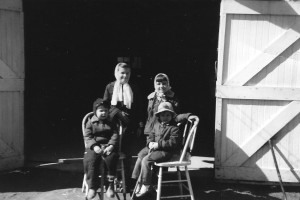 I created elaborate stories for my sisters and friends with plots and story lines that lasted for days. We were cowboys and Indians. We were pioneers who made great, epic journeys in our red-flyer “Conestoga” wagons packed with our baby dolls and food supplies. The fields and woods near our house were vast, uncharted wildernesses where we might encounter pirates or find buried treasure. We camped out in makeshift tents in our backyard during the summer, imagining that we were great explorers on safari. The dark, creepy cellar of our 100 year-old house became the setting for many spine-tingling mysteries. Here is a picture of my two sisters and me with a friend, pretending to be a pitiful family of orphans like The Boxcar Children.
I created elaborate stories for my sisters and friends with plots and story lines that lasted for days. We were cowboys and Indians. We were pioneers who made great, epic journeys in our red-flyer “Conestoga” wagons packed with our baby dolls and food supplies. The fields and woods near our house were vast, uncharted wildernesses where we might encounter pirates or find buried treasure. We camped out in makeshift tents in our backyard during the summer, imagining that we were great explorers on safari. The dark, creepy cellar of our 100 year-old house became the setting for many spine-tingling mysteries. Here is a picture of my two sisters and me with a friend, pretending to be a pitiful family of orphans like The Boxcar Children.
The only writing I did besides school assignments was a play entitled “My Old Kentucky Home.” We performed it in our backyard and charged the neighborhood kids 5 cents each to watch—my first writing income. I barely remember the plot but as the production’s “security chief,” it was my job to protect our backyard theater from spies until the performance. I took my job very seriously and decided to stage a drill to keep everyone on their toes, making up an outrageous story about seeing a man in a yellow shirt skulking around. Unfortunately, my story was so convincing that it caused panic in our neighborhood as rumors of a mysterious stranger spread. How could I explain to all the concerned adults that there was a huge difference in my mind between telling a lie and using my imagination? One thing was clear, my early “fiction” was very convincing.
I didn’t discover that I enjoyed writing until I was in my thirties—and then it was like coming home, returning to my childhood, living in my imagination all over again. I loved it! Once again, I could live all sorts of adventures by putting myself in my characters’ shoes, making up stories, creating new worlds. Researching my historical novels is one of my favorite parts of this writing life. I love visiting the places where my characters lived, seeing what they saw and smelled and touched. By “playing” in all of these places, my imagination is set free to create.

Ellis Island
I played on Ellis Island for a day with my sister Peggy before writing Until We Reach Home, imagining what it was like to arrive there together like the immigrant sisters in my novel.
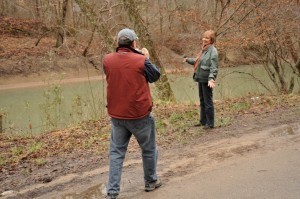 My husband and I played in the mountains of Eastern Kentucky when I researched Wonderland Creek, taking photos and notes along the way, letting the sights and smells bring the true story of the “Packhorse Librarians” to life.
My husband and I played in the mountains of Eastern Kentucky when I researched Wonderland Creek, taking photos and notes along the way, letting the sights and smells bring the true story of the “Packhorse Librarians” to life.
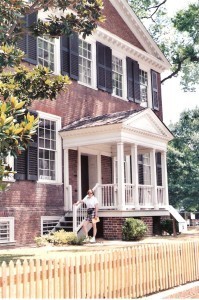 Candle in the Darkness took place in Virginia during the Civil War, so of course I had to spend time playing in a period bed-and-breakfast to get a feel for the elegance of Southern life.
Candle in the Darkness took place in Virginia during the Civil War, so of course I had to spend time playing in a period bed-and-breakfast to get a feel for the elegance of Southern life.
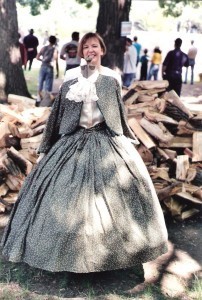 Researching Fire by Night took me to several Civil War re-enactments where I played all day, seeing what daily life in an army camp was like. (Wool uniforms are hot and hardtack tastes terrible!)
Researching Fire by Night took me to several Civil War re-enactments where I played all day, seeing what daily life in an army camp was like. (Wool uniforms are hot and hardtack tastes terrible!)
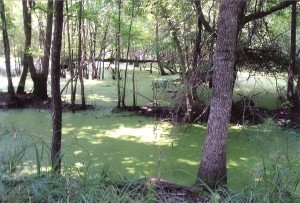 For A Light to my Path, I took a hike into the wilds of a state wildlife refuge in South Carolina because I wanted to experience what an escaping slave might have endured. (Mosquitoes, swamps, alligators, and spiders the size of my hand!)
For A Light to my Path, I took a hike into the wilds of a state wildlife refuge in South Carolina because I wanted to experience what an escaping slave might have endured. (Mosquitoes, swamps, alligators, and spiders the size of my hand!)
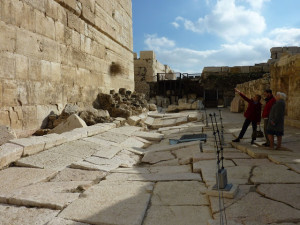 The book I’m currently writing, Return to Me, takes place in Jerusalem during the time of Ezra and Nehemiah—so of course I had to go to Israel to play. I ate Israeli food, walked along dusty hiking trails in the Judean countryside, worshiped at a remnant of the temple, and listened to Jewish songs and prayers. I needed to know what the birds sounded like in the morning and what the sky looks like above Jerusalem.
The book I’m currently writing, Return to Me, takes place in Jerusalem during the time of Ezra and Nehemiah—so of course I had to go to Israel to play. I ate Israeli food, walked along dusty hiking trails in the Judean countryside, worshiped at a remnant of the temple, and listened to Jewish songs and prayers. I needed to know what the birds sounded like in the morning and what the sky looks like above Jerusalem.
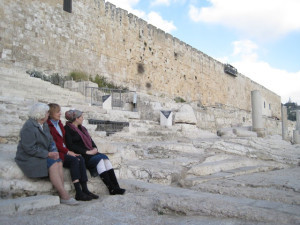 When I’m writing, I live in my imagination like I did as a child, creating stories that will take my readers to faraway places and times. Writing is play for me (and of course, it’s also very hard work!) But the adults don’t yell at me any more for telling “lies”—now I get paid to do it.
When I’m writing, I live in my imagination like I did as a child, creating stories that will take my readers to faraway places and times. Writing is play for me (and of course, it’s also very hard work!) But the adults don’t yell at me any more for telling “lies”—now I get paid to do it.
Best of all, I get to share my faith, incorporating the lessons God is teaching me into the lives of my characters. I wouldn’t trade my life for any other!
So tell me, how did you play as a child? And how might you bring the joy and creativity of your playtime into your life and your work?



